Retro Replay Review
Gameplay
Seawolf delivers a straightforward yet surprisingly deep submarine combat experience. You pilot your sub along the ocean floor, sliding left and right as enemy vessels pass overhead. Each move feels weighty, emphasizing the slow, deliberate pace of submarine warfare. The real thrill, however, comes from lining up your shots while keeping track of the countdown on your torpedoes and fuel reserves.
Resource management sits at the heart of Seawolf’s gameplay loop. With only fifty torpedoes and ninety-nine units of fuel, every shot must count—and every missed shot is a wasted opportunity. Mines drift ominously in the water column, ready to gobble up your precious ammunition without awarding any points. At the same time, white-hulled ships introduce a unique risk: if your torpedo rebounds off them, you lose not just the weapon but also precious fuel.
The enemy roster changes dynamically as you progress. Standard cargo vessels skim the surface, while nimble destroyers and PT boats zigzag unpredictably. Enemy submarines occasionally appear near the top of the screen, forcing you to consider timing and trajectory more carefully. The game ramps up in difficulty by increasing ship speed and frequency, so each round feels like a fresh test of skill.
Seawolf’s control scheme is intuitive: a single joystick moves your sub horizontally and a button launches torpedoes. This simplicity is its strength, allowing players to focus fully on mastering the timing and anticipating enemy patterns. Though the learning curve is modest, true mastery demands patience and careful observation of every on-screen element.
One of the most addictive aspects of Seawolf is its risk-versus-reward structure. Do you fire rapidly to clear the screen and risk depleting your torpedoes? Or do you wait for the perfect shot, knowing an errant mine could render your next torpedo useless? These choices keep each play session tense, compelling you to refine your strategy with each life lost.
Graphics
Seawolf embraces a retro-inspired aesthetic that pays homage to early-’80s coin-op designs. The color palette is limited but effective, using contrasting hues of blue for ocean depths and bright whites for vessels. This visual clarity ensures that mines, ships, and your submarine always stand out against the backdrop.
The sprite work is crisp and clean, channeling the minimalist charm of the original Midway Sea Wolf arcade cabinet. While the animations are relatively simple—ships bob up and down, torpedoes travel in straight lines—they capture the essence of classic naval warfare. Subtle details, like the animated bubbles trailing your sub or the explosion effects on direct hits, add a layer of polish that enhances immersion without overcomplicating the visuals.
Seawolf’s user interface is unobtrusive yet informative. Fuel and torpedo counts are prominently displayed, ensuring you never lose track of critical resources mid-battle. Lives remaining are also clearly indicated, helping you plan aggressive maneuvers when you’re behind or play conservatively to stretch your remaining chances.
Although Seawolf doesn’t venture into high-end 3D graphics, its purely 2D presentation feels intentional and respectful of its arcade roots. The game runs smoothly on a variety of platforms, maintaining a consistent frame rate even when several vessels and torpedoes populate the screen. There’s a charming authenticity to this visual approach—one that veteran players of Seafox and the original Sea Wolf series will recognize immediately.
Story
At its core, Seawolf offers minimal narrative, choosing instead to focus on pure gameplay tension. You assume the role of a lone submarine captain, patrolling hostile waters and engaging any vessel that dares cross your path. The premise is simple: sink as many enemy ships as possible before running out of torpedoes or fuel.
While there’s no branching dialogue or cutscene-driven plot, Seawolf’s setting evokes the thrill of Cold War–era naval skirmishes. Each level represents a new tactical zone, with denser minefields and faster-moving ships testing your mettle. The absence of a heavy narrative is a conscious design choice, allowing players to project their own stories onto the conflict—whether you see yourself as a daring hero or a resourceful survivalist.
Small touches hint at a broader world beyond the arcade. The variety of ship classes—cargo transports, destroyers, enemy submarines, and PT boats—suggests a full-scale maritime campaign in which you play a pivotal role. Even without textual backstory, the escalating difficulty and varied targets imply that your actions have strategic consequences, feeding the imagination and motivating repeated plays.
Ultimately, Seawolf’s “story” emerges from your personal journey through increasingly punishing waves of adversaries. Each torpedo fired, each mine avoided, and each last-second fuel save contributes to a self-authored saga of undersea warfare. For players who prefer emergent narratives driven by gameplay rather than cutscenes, Seawolf’s approach will be a refreshing change of pace.
Overall Experience
Seawolf strikes a compelling balance between simplicity and depth, making it an excellent pick for both retro enthusiasts and newcomers seeking a challenging arcade-style shooter. The game’s quick-play sessions are ideal for on-the-go entertainment, yet the strategic underpinnings reward longer, more focused runs as you hone your resource management skills.
Its audio design complements the visuals perfectly: sparse, tension-building music underscores the action, punctuated by the satisfying “whoosh” of each torpedo launch and the explosive clang of a direct hit. Sound cues also alert you to low fuel levels and remaining torpedo counts, reinforcing the urgency of each decision without resorting to intrusive pop-ups.
While the lack of a detailed narrative may deter players accustomed to story-driven campaigns, Seawolf’s arcade heritage shines in its pure, unfiltered action. The addictive score-chasing and incremental difficulty curve ensure that every life lost feels like a personal challenge to be overcome, stoking the “just one more try” impulse that defines the best arcade games.
In summary, Seawolf is a polished homage to the classics—a game that respects its origins while delivering a standalone experience that feels both familiar and fresh. Whether you’re seeking a nostalgic trip back to the heyday of coin-op arcades or simply a tight, resource-based shooter with high replay value, Seawolf offers hours of engaging underwater combat.
 Retro Replay Retro Replay gaming reviews, news, emulation, geek stuff and more!
Retro Replay Retro Replay gaming reviews, news, emulation, geek stuff and more!
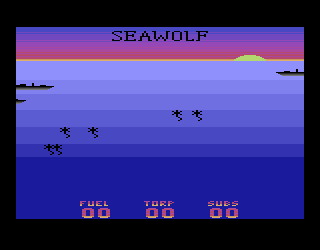
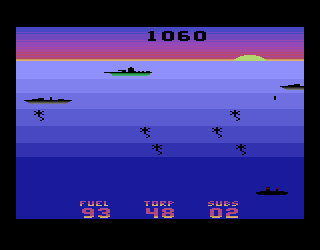
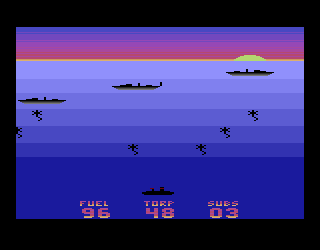
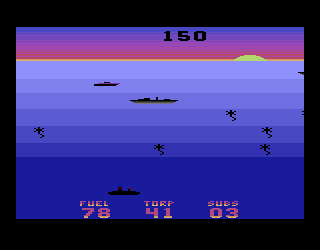
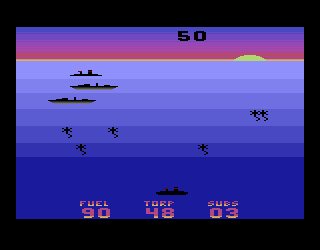
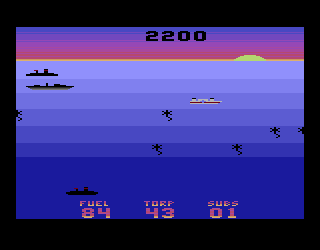



Reviews
There are no reviews yet.